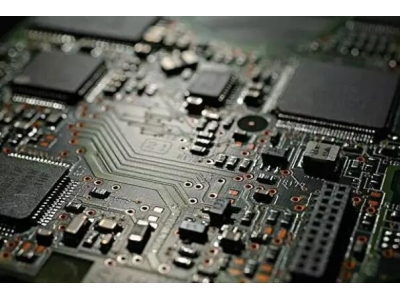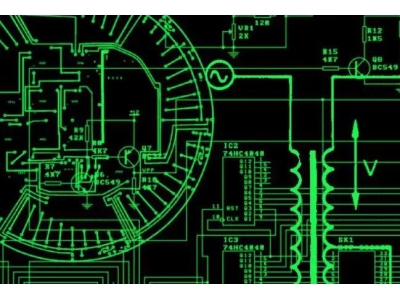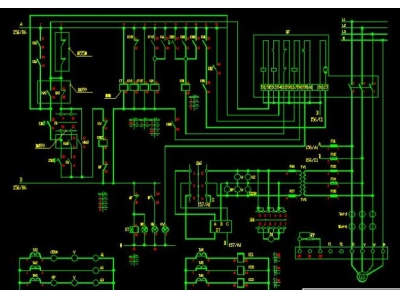c8050使用什么管代换?
一、c8050使用什么管代换?
不能用8050代换、D667是NPN型三极管。参数是120V,1A,0.9W。可用C系列的C1475,C2235,C3228等进行代换。
二、c8050三级管参数?
c8050参数为电流0.8A,耐压35V,放大倍数100倍
三、c8050开头的火车是什么车?
C8050次列车属于城际高速列车。它是由张家界西到达长沙,正点到达时间3小时19分。
张家界西站位于湖南省张家界市境内,隶属于中国铁路广州局集团有限公司,是连接黔常铁路与张吉怀高速路的重要枢纽车站,也是集铁路、汽运、公交、磁悬浮等多种交通方式于一体的综合交通枢纽。
四、c8050三极管参数?
参数如下:
1、最大集电极电流(A):0.5 A。
2、最大集电极-发射极电压(VCEO):25。
3、特征频率:150 MHz。
PE8050 硅 NPN 30V 1.5A 1.1W。
3DG8050 硅 NPN 25V 1.5A FT=190
S8050 参数:耗散功率0.625W(贴片:0.3W) 集电极电流0.5A 集电极--基极电压40V 集电极--发射极击穿电压25V 特征频率fT 最小150MHZ
C8050参数: 耗散功率1W 集电极电流1.5A 集电极--基极电压40V 集电极--发射极击穿电压25V 特征频率fT 最小100MHZ 典型190MHZ通过比较,c8050能替换s8050。反之不可以
五、电路图?
画电路图需要先找好图形绘制工具 与工具相结合 能更快 更好的提高工作效率 不耽误时间 现在市场上的亿图图示功能很强大 操作简单
六、C8050是用于电蚊拍上的吗?
C8050是一个NPN型硅三极管,它的用途很广,电蚊拍的升压震荡电路就用到他,他和升压变压器组成自激振荡电路,把电蚊拍的4--6V电压升高到1000-2000V左右。
七、什么可以替代c8050三极管?
8050是现在很常用的一种小功率NPN管。该管Pcm=1W,Icm=1.5A,BVceo=25V。你驱动的是流水灯,功率不大,可以用常用的9013、9014、2N5551直接替换,它们的引脚排列和8050完全相同。你面对型号,从左到右引脚依次是e、b、c。耗散功率: 1W(TA=25℃) 2W(TC=25℃) 集电极电流1.5A集电极--基极电压40V集电极--发射极击穿电压25V特征频率fT 最小100MHZ放大倍数:按三极管后缀号分为 B C D D3 共4档放大倍数 B:85-160 C:120-200 D:160-300 D3:300-400引脚排列有EBC ECB两种
八、c8050三极管引脚及参数?
答:c8050三极管引脚及参数。1.左边的引脚就是发射极(E),中间是基极(B),右边则是集电极(C)。然后就是发射极接到电机的正端,电机的负端需要接到地上,集电极接到电源上的正端,基极接到单片机I/O的接口上,就可以运作了。
2.如果是像8050 ,9014一样NPN的用万用表检测他们的引脚,黑表笔接一个极,用红笔分别接其它两极,两个极都有5K阻值时,黑表笔所接就是B极。
3.这时用黑红两表笔分别接其它两极,黑表笔所接那个极和B极,表指示阻值小的那个黑表所接就是C 极。
九、s8050与c8050引脚区别?
S8050 类型:NPN; 耗散功率:0.625W(贴片:0.3W); 集电极电流:0.5A; 基极电压:40V; 发射极击穿电压:25V; 发射极饱和电压: 0.6V;特征频率ft : 最小150MH; C8050类型:NPN;耗散功率:1W(TC=25度:2W);集电极电流:1.5A;基极电压:40V;发射极击穿电压:25V;发射极饱和电压: 0.6V;特征频率ft : 最小100MH; 如果用于功率较大场合,S8050不能代替C8050,但C8050完全可以替代S8050。
十、探照灯电路图
探照灯电路图: 理解、构建和优化探照灯
探照灯是一种广泛应用于舞台演出、户外照明和应急照明等领域的强光照明设备。在探照灯的核心部件之一是它的电路板,负责控制和供电。本文将带您深入了解探照灯电路图的构建和优化,帮助您了解探照灯的工作原理,并提供指导以构建高效可靠的探照灯。
了解探照灯电路图
探照灯电路图通常包括多个关键组件,如电源模块、控制模块、光源模块等。通过仔细研究电路图,您可以了解到这些组件之间的连接方式和信号传输原理。
在电路图中,常见的连接方式包括并联和串联。并联的组件同时接收相同的电压,但电流被分流到各个组件;串联的组件则依次接收电压,电流在各个元件之间相等。
此外,探照灯电路图中的控制模块通常包括变阻器、电位器和开关等元件,用于调节和控制亮度、色温等参数。
构建探照灯电路图
构建探照灯电路图需要具备一定的电子电路基础知识。以下是构建探照灯电路图的基本步骤:
- 确定探照灯的功率需求和光照要求。
- 选择合适的电源模块,确保其输出电压和电流满足探照灯的需求。
- 设计控制模块,包括亮度调节、开关控制和保护电路。
- 选择合适的光源模块,如LED光源。
- 根据电路图进行元件的连接和布局。
- 进行电路测试和参数调整,确保探照灯的性能符合要求。
优化探照灯电路图
优化探照灯电路图可以提高探照灯的性能和稳定性,延长其使用寿命。以下是一些优化措施:
- 选择高效能源: 选择高效的电源模块,以减少能量损耗和发热。
- 合理布局: 在电路板上合理布局组件,减少信号干扰和高温区域。
- 保护电路设计: 添加过流保护、过压保护和短路保护等保护电路,提高探照灯的安全性。
- 使用优质材料: 选择优质元件和材料,降低故障率和损耗。
- 热管理: 针对高功率探照灯,设计风扇散热模块,保持其正常工作温度。
结论
探照灯电路图是构建和优化探照灯的重要参考。通过深入了解电路图,您可以更好地理解探照灯的工作原理,并根据需求构建高效可靠的探照灯。优化探照灯电路图可以提高探照灯的性能和稳定性,延长其使用寿命。希望本文对您进一步了解和构建探照灯有所帮助。
Translated text in English: htmlFlashlight Circuit Diagram: Understanding, Building, and Optimizing Flashlights
A flashlight is a powerful lighting device widely used in stage performances, outdoor lighting, and emergency illumination. One of the key components of a flashlight is its circuit board, which is responsible for control and power supply. This article will take you through the understanding, building, and optimization of flashlight circuit diagrams, helping you grasp the working principles and provide guidance for constructing efficient and reliable flashlights.
Understanding Flashlight Circuit Diagrams
A flashlight circuit diagram typically consists of several essential components such as power modules, control modules, and light source modules. By studying the circuit diagram closely, you can understand how these components are connected and the principles of signal transmission.
In circuit diagrams, common connection methods include parallel and series connections. In parallel, the components receive the same voltage simultaneously, but the current is divided between them. In series, the components receive the voltage sequentially, and the current is equal between the elements.
In addition, the control module in the flashlight circuit diagram often includes components such as variable resistors, potentiometers, and switches to regulate and control brightness, color temperature, and other parameters.
Building Flashlight Circuit Diagrams
Building a flashlight circuit diagram requires a certain level of knowledge in electronic circuits. The following are the basic steps for constructing a flashlight circuit diagram:
- Determine the power requirements and lighting needs of the flashlight.
- Select a suitable power module to ensure its output voltage and current meet the requirements of the flashlight.
- Design the control module, including brightness adjustment, switch control, and protection circuits.
- Select a suitable light source module, such as LED light sources.
- Connect and layout the components according to the circuit diagram.
- Conduct circuit testing and parameter adjustment to ensure the flashlight's performance meets the requirements.
Optimizing Flashlight Circuit Diagrams
Optimizing flashlight circuit diagrams can improve the performance, stability, and longevity of flashlights. Here are some optimization measures:
- Choose efficient power sources: Select high-efficiency power modules to reduce energy loss and heat generation.
- Proper layout: Arrange components on the circuit board in a manner that reduces signal interference and high-temperature areas.
- Protection circuit design: Add protection circuits such as overcurrent protection, overvoltage protection, and short circuit protection to enhance flashlight safety.
- Use high-quality materials: Choose quality components and materials to lower failure rates and losses.
- Thermal management: Design fan cooling modules for high-power flashlights to maintain normal operating temperatures.
Conclusion
A flashlight circuit diagram is a crucial reference for building and optimizing flashlights. By gaining a deeper understanding of the circuit diagram, you can better comprehend the working principles of flashlights and construct efficient and reliable flashlights according to the requirements. Optimizing flashlight circuit diagrams can enhance performance, stability, and lifespan. We hope this article helps you further comprehend and build flashlights.





